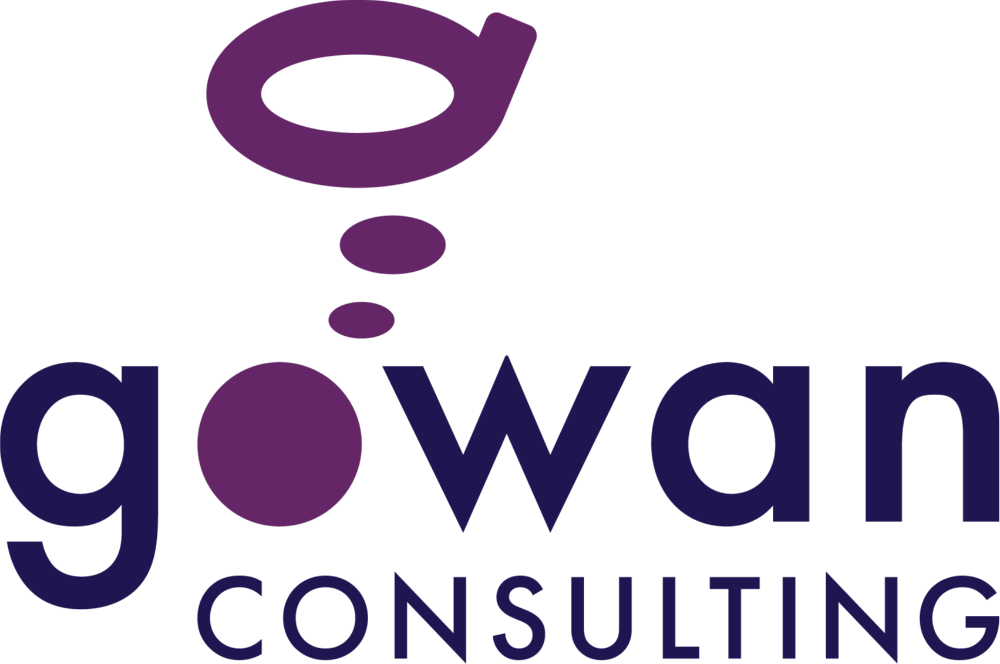Empowering Women in the Workplace Through Inclusive Practices
Aug 22, 2023
The journey towards gender equality within the workplace continues as businesses work to build a future where every woman can pursue her professional goals. In the past, women’s health issues have been seen as taboo or irrelevant to the workplace, but recent regulations set by the Canadian and United States government are changing how women are supported at work by mandating accommodations that allow their diverse needs to be addressed. Beyond regulations, there are other ways to support women at work to ensure that workers’ safety and well-being are protected. Occupational Therapy can provide organizations with the tools and resources needed to identify gender-specific barriers, implement fair and reasonable accommodations, and provide stay-at-work or return-to-work services for women, as well as specialized training for the whole team.
Gender-Inclusive Policies and Regulations
Research on women’s health in the workplace shows that 85% of women experience stress or anxiety about managing their menstrual cycle at work and 80% experience symptoms of physical pain; however, only 3% of women believe their employer is doing enough to support their needs.1
New Canadian regulations will increase accessibility of menstrual products and help to reduce stigma in the workplace. Effective as of December 15, 2023, public and private federally regulated employers in Canada will be required to provide free menstrual products along with appropriate disposal in each bathroom stall for their employees. Providing this resource to women for free is a significant stride in creating an inclusive environment and recognizes biological differences, considering recent estimates that 1 in 3 women struggle to afford menstrual products, and 35% of federal employees require menstrual products. If it is not feasible to provide feminine products in a bathroom, businesses will still be required to ensure items are always accessible in a private, employer-controlled work location.2
Supporting Pregnancy in the Workplace
In the United States, as of June 27, 2023, the Pregnant Workers Fairness Act has been legislated to ensure employers provide reasonable accommodations to women that are pregnant, giving birth, or experience pregnancy-related medical conditions.3 This regulation ensures that women are provided equal ability to work whilst tending to the needs of their pregnancy.
Examples of accommodations for pregnant women include:
- Sitting down when needed
- Having flexible hours
- Additional break time
- Time off work after childbirth
- Being exempted from physically taxing activities that may affect an employee more during pregnancy.
- Being exempted from exposure to potentially harmful chemicals or environmental toxins
Pregnancy loss is a topic that is often overlooked when considering accommodations for women; however, 1 in 4 pregnancies result in miscarriage, and there are approximately 3,000 stillborn babies per year in Canada. Pregnancy loss results in physical impacts such as bleeding, cramping, and post-partum symptoms, with the recommended physical recovery time being 6 to 8 weeks. Emotionally, pregnancy loss may also be very depleting for employees, conjuring feelings of sadness, shock, anger, guilt, and panic. Psychologically, this may result in post-traumatic stress disorder, depression, bereavement, and anxiety.
Women may also be burdened by silence if they work in male-dominated environments or workplaces where the grief of pregnancy loss is seen as unnecessary or unprofessional. A new study led by the University of Sydney has found 68% of women who returned to work following a miscarriage reported receiving no support or negative support from their HR departments.4 As a result of the stigma, a suffering employee may have lower productivity, decreased quality of work, increased absences, and may possibly resign after pregnancy loss.
It is important to appropriately support an employee who takes time off work by ensuring empathy and understanding, implementing a feasible return-to-work process, and providing ongoing support upon returning to work. Accommodations, flexible work hours, mental health training, and ergonomics can help businesses ensure that women are adequately supported throughout their pregnancy and in any related circumstances so they can stay at work and navigate life’s changes successfully. Pregnancy loss policies should also be considered to ensure that there are guidelines for compensation and the time off that an employee is entitled to.
The Impact of Gender and Sex Differences in the Workplace
Women’s biological differences are often overlooked in the workplace, which can put them in a difficult position to perform their jobs successfully. It can also create a very real danger for women, as seen in women’s struggles with the PPE gender gap. Biases against women and social constructions of gender are also threats to women’s success, especially for women of colour and marginalized identities. These groups face higher rates of harassment, lower psychological safety, and higher gender-based violence in the workplace compared to men.5
Menopause is another significant part of women's health that is often overlooked in the workplace. According to the Menopause Foundation of Canada, this is a health issue that affects 2 million working women between the ages of 40 to 45 and costs the Canadian economy an estimated $3.5 billion dollars.6 Despite its prevalence and economic implications, menopause remains a taboo topic in many workplaces, with 54% of women reporting that the subject is still stigmatized.
Women also face additional mental health challenges and barriers to growth and career advancement. Overall, women are twice as likely as men to suffer from depression, anxiety, eating disorders, and PTSD.7 Mental health issues among women were seen to spike during COVID-19 with gender roles playing a significant factor, as many women experienced a disproportionate workload by taking the brunt of childcare responsibilities whilst managing busy work lives. Women also continue to face inequality within their careers due to lack of leadership roles, with less than 5% of individuals in top leadership positions being composed of women of colour, as per the 2022 McKinsey & Company Women in the Workplace study. Female employees who do achieve senior leadership are 12% more burned out than men at the same level and are more likely to report that their gender or being a parent have affected their career advancement.8 These unique challenges underscore the continued need for inclusive practices in the workplace that can help women thrive in their roles.
What Can Employers Do?
Protecting and supporting the rights of women is essential for organizations to keep women safe and healthy at work. Ways to do this may include the following:
- Acknowledge and recognize the women in your workplace through equal growth opportunity and promotion into leadership roles.
- Enforce a safe and inclusive work environment that considers the unique needs and challenges of women.
- Reduce inequality in pay and positions for women in your workplace.
- Provide women equal opportunities for advancement, further education, and skill set development.
- Encourage and highlight the achievements of the women in your workplace.
- Offer support for work-life balance to help women navigate their personal workloads and challenges.
- Accommodate women to be able to continue working while facing physical or mental functional limitations.
- Provide Diversity, Equity, and Inclusion (DEI) training to address the unique challenges of women.
- Provide training to all employees on workplace gender-based violence.
- Provide education and training on how to recognize the signs of domestic violence.
- Keep up with legal requirements and regulations around pregnancy, including laws on maternity leave and bereavement leave following pregnancy loss.
- Consider inclusivity in any policies developed around pregnancy loss, offering support for fathers, and those using surrogates to avoid potential discrimination claims.
How Can Gowan Consulting Help?
- Make an accommodation referral to have an Occupational Therapist assess the needs of pregnant employees during pregnancy and post-partum.
- We provide individuals and teams with Psychological Safety at Work Training, Manager Mental Health Training, Inclusive Leader Training, and more. Our custom workshops and online courses cover all areas of psychological risks within the workplace. We assist employers in assessing and reducing the risks as well as implementing strategies and tools within the workplace.
- Contact us to learn how our team can provide accessibility support for your workplace and help implement effective and inclusive policies.
- We offer a variety of inclusive leadership trainings. Check out our online store for our current public webinars and workshops, or contact us to learn about our customized training.
- August’s Membership Topic program is pregnancy loss – to learn more about how to support an employee after pregnancy loss, sign up for our membership program.
Works Cited
[1] Wateraid. (2023, May 23). 85% of UK working women feel stress or anxiety managing their period at work – says poll. WaterAid UK. https://www.wateraid.org/uk/media/managing-periods-in-the-workplace-poll
[2] Frazer, M., Tartick, B., & Denroche, P. (2023, July 20). Federally-regulated employers in Canada required to provide free menstrual products for employees. https://www.lexology.com/library/detail.aspx?g=0a1d10a3-7eaf-41e9-9c78-b8359f9de0ab
[3] S. Equal Employment Opportunity Commission. (n.d.). What You Should Know About the Pregnant Workers Fairness Act. US EEOC. https://www.eeoc.gov/wysk/what-you-should-know-about-pregnant-workers-fairness-act
[4] The University of Sydney. (2021, October 28). Workplaces can do better to support women following miscarriage: Study. https://www.sydney.edu.au/news-opinion/news/2021/10/28/workplaces-can-do-better-to-support-women-following-miscarriage-.html
[5] Greenwood, Kelly. (2023, January 10) How organizations can support women’s mental health at work. https://hbr.org/2022/03/how-organizations-can-support-womens-mental-health-at-work
[6] Sun Life. (n.d.) Working together to support women's health. https://www.sunlife.ca/workplace/en/group-benefits/workplace-health-resources/health-strategy-resources/support-women-health/?WT.ac=en-ca:web:slf_internal:sp:mar7
[7] Gender Equality Blueprint. (n.d.) The roadmap to pursue gender equality in the workplace. United Nations Global Impact. https://genderequalityblueprint.unglobalcompact.ca/workplace-wellbeing-and-safety/
[8] Krivkovich et al. (2022, October 18). Women in the workplace 2022. McKinsey & Company. https://www.mckinsey.com/featured-insights/diversity-and-inclusion/women-in-the-workplace

